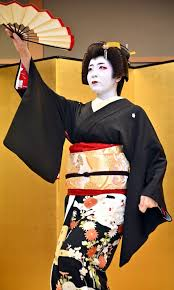A geisha is a traditional Japanese female entertainer who is skilled in various Japanese arts such as classical music, dance, and games. The role of a geisha, also known as a "geiko" in Kyoto dialect, has been a part of Japanese culture for centuries. Here are some key aspects about geishas:
Training: Becoming a geisha involves rigorous training from a young age. Apprentices, known as "maiko," learn traditional dance, music, tea ceremony, and conversation skills. This training can start as early as 15 years old and lasts several years before a maiko becomes a full-fledged geisha.
Appearance: Geishas are known for their distinctive appearance, which includes elaborate kimonos, white face makeup with red and black accents, and intricate hairstyles adorned with ornaments. The traditional kimono is typically very elaborate and can include many layers.
Role and Skills: Geishas are trained to entertain guests through conversation, traditional dance, and playing musical instruments like the shamisen (a three-stringed instrument). They often perform at tea houses or private parties and are known for their grace, poise, and cultural knowledge.
Cultural Significance: Geishas are considered cultural ambassadors who preserve and promote Japanese traditional arts and customs. They play a role in maintaining the cultural heritage of Japan, especially in historical districts known as "hanamachi."
Modern Context: While the number of geishas has decreased over the years, they continue to be a symbol of Japanese tradition and artistry. In contemporary times, they also serve as cultural icons and are sometimes involved in events aimed at promoting Japanese culture to a global audience.
Overall, geishas represent a unique and elegant aspect of Japanese culture, combining artistry with tradition.


No comments:
Post a Comment